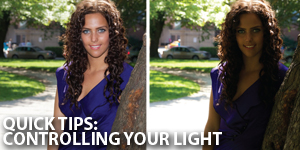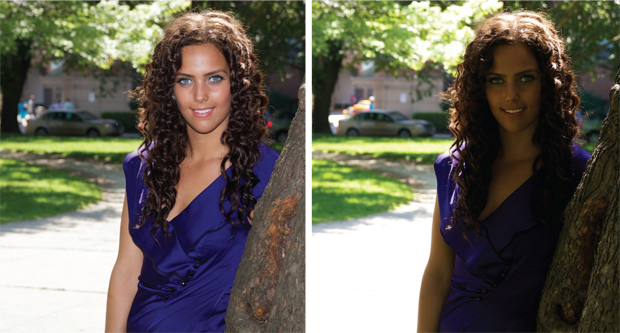“I’m a budding photographer and would like to know what you can do to engage your portrait subjects in order to bring out their most natural and relaxes looks for the camera.”
Take control of your lighting and exposure. Backlit subjects are among the most challenging situations a photographer can find themselves in. Even the best cameras can be thrown off by strong backlighting, resulting in pictures where the main subject is silhouetted and the background is overexposed. This is a topic we cover in several of our Henry’s School of Imaging classes, and our students learn that it is possible to get better results as long as they remember a few important tips and tricks.
Whenever possible, try to position yourself between the light source and your subject. That way, your subject will be lit from the front and your camera’s light meter will have an easier time producing an accurate and balanced exposure. Even better, try to photography your subjects when the light is diffused, such as in open shade or when the sky is slightly overcast. Nearly all subjects look better in soft, even light as opposed to harsh, directional light.
However, it’s not always possible to move yourself or your subject, or to wait for the light to change. If that’s the case, consider using your camera’s built-in flash. The small flash that either sits next to the lens or pops up above it doesn’t have nearly enough power to light up an entire room, but it’s terrific for filling in shadows or adding some light to brighten up a backlit subject. This is only effective when you’re within three or four metres of your primary subject, but it could be just what you need when photographing people against a bright window or a brilliant sky. In this situation, your camera will probably not automatically trigger the flash itself, so look for the flash symbol button and cycle through the options until you find “force flash”, or press the button that manually activates the retracted pop-up flash. The extra light added by the flash will make your foreground subject brighter, helping balance it against the brightness of the light source behind it.
If you’re too far away for the flash to have the desired effect, you may want to consider changing your camera’s light metering setting to “spot metering”. Normally, most cameras measure light across the entire frame and choose a combination of aperture and shutter speed that strives to produce an averaged exposure. When your subject is dramatically backlit, however, the contrast between the lightest part of the image and the darkest part of the image is far too great for the light meter to handle. By setting your camera’s meter to “spot metering”, you’re telling it to only measure the light fro ma very small spot at the centre of the frame. This will allow the camera’s meter to ignore the bright light flooding in from behind the subject and will produce an exposure based only on the desired part of the frame.
Now that we’ve given you a basic understanding of how to take control of the light that falls on your subject, get out and try it for yourself! Don’t forget to share your results in the comments below!



